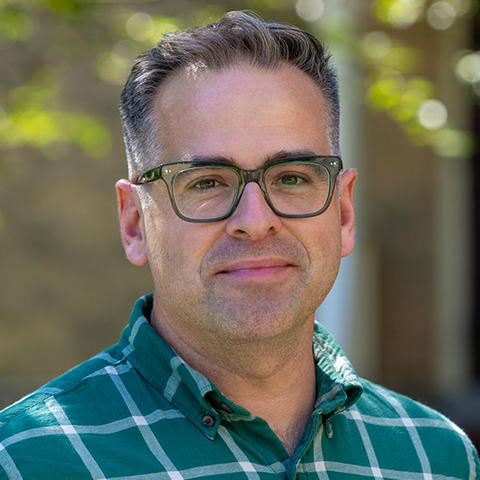Summer Centered: Haitong Lian '27 Studies the Locomotion of Carolina Wolf Spiders on Complex Terrain

Photo by Mac Sanders '24.
Details
The prospective physics major has gained valuable hands-on experience in her quest to improve the lives of others through medical engineering.
In a biophysics lab located in the East Wing of the Marian E. Koshland Integrated Natural Sciences Center, 25 Carolina wolf spiders have just turned a year old. Tucked into burrows they’ve created in the individual quart-size deli containers they call home, they eagerly await a well-deserved birthday treat.
“We bought them a new box of cockroaches, and my professor put a little happy birthday sign on it,” says one of their caretakers, Haitong Lian ’27, a prospective physics major and health studies and mathematics minor. “Later, we’re going out to lunch to celebrate.”
The appreciation Lian displays for the arachnids is unsurprising given the important role they’ve played in her summer as a member of the John and Barbara Bush Professor in the Natural Sciences Suzanne Amador Kane’s research group. Like other species of wolf spiders, Carolina wolf spiders don’t spin webs to capture their prey and, instead, hunt for it. Throughout her summer experience, Lian has been studying, via footage captured with a high-speed camera, how they traverse different types of complex terrain variations in particle sizes while performing escape behaviors. She hopes what she learns can help her improve the lives of others through advancements in medical engineering.
“This project is really interesting since it is focused on biomechanics,” says Lian. “Biologists often focus on more micro aspects of organisms like investigating their cells. But as physicists, we look at other aspects, like how this could inform advancements in robotics or, in the future, bionics.”
Lian, who hails from Beijing, says her interest in the medical realm was stoked when she was a member of a team of high school students who produced a humanitarian documentary on three practicing doctors in Liaoning Province. Titled The Healers, it was recognized at the Tokyo International Short Film Festival and Silk Road Film Awards Cannes. After graduating, Lian continued to work with high school students on a second documentary, this one focused on the “barefoot doctors” who venture into southern China’s Daliang Mountains to heal members of the Yi people.
“After those experiences, I felt that I should explore how medical engineering works and how it can help people by using my physics and math background,” says Lian. “I think majoring in physics and minoring in health studies and mathematics is a good way to do that.”
Before arriving at Haverford, she says she didn’t have the opportunity to perform any hands-on experiments, largely due to COVID-19 and a lack of resources at her school. But in Professor Amador Kane’s lab, she and her lab partner Jack Vice ’25 helped construct the arena the spiders skitter across, mounted the camera, and gained valuable experience with MATLAB, the programming platform designed for engineers and scientists. After collecting more than 300 videos over this summer, they examine parameters like speed, acceleration, and yaw angle for further statistical analysis. They are also working on creating 3D trajectories on heatmaps of the complex terrain, and tracking spider’s leg motion and traces on sand.
Looking ahead, Lian sees an opportunity to work with Deep Patel ’25 and Willow Kohn ’25, other members of Amador Kane’s lab who are conducting locomotion and substrate research with a 3D-printed robotic dog. Perhaps, she says, there’s an opportunity to leverage their growing understanding of biophysics to create and conduct experiments with an eight-legged robot.
“I hope this research on robophysics can eventually benefit people. For example, after an earthquake, maybe that kind of robot could help navigate the debris,” she says. “Maybe it could explore Mars or the moon since you never know what the substrate might be like up there.”




